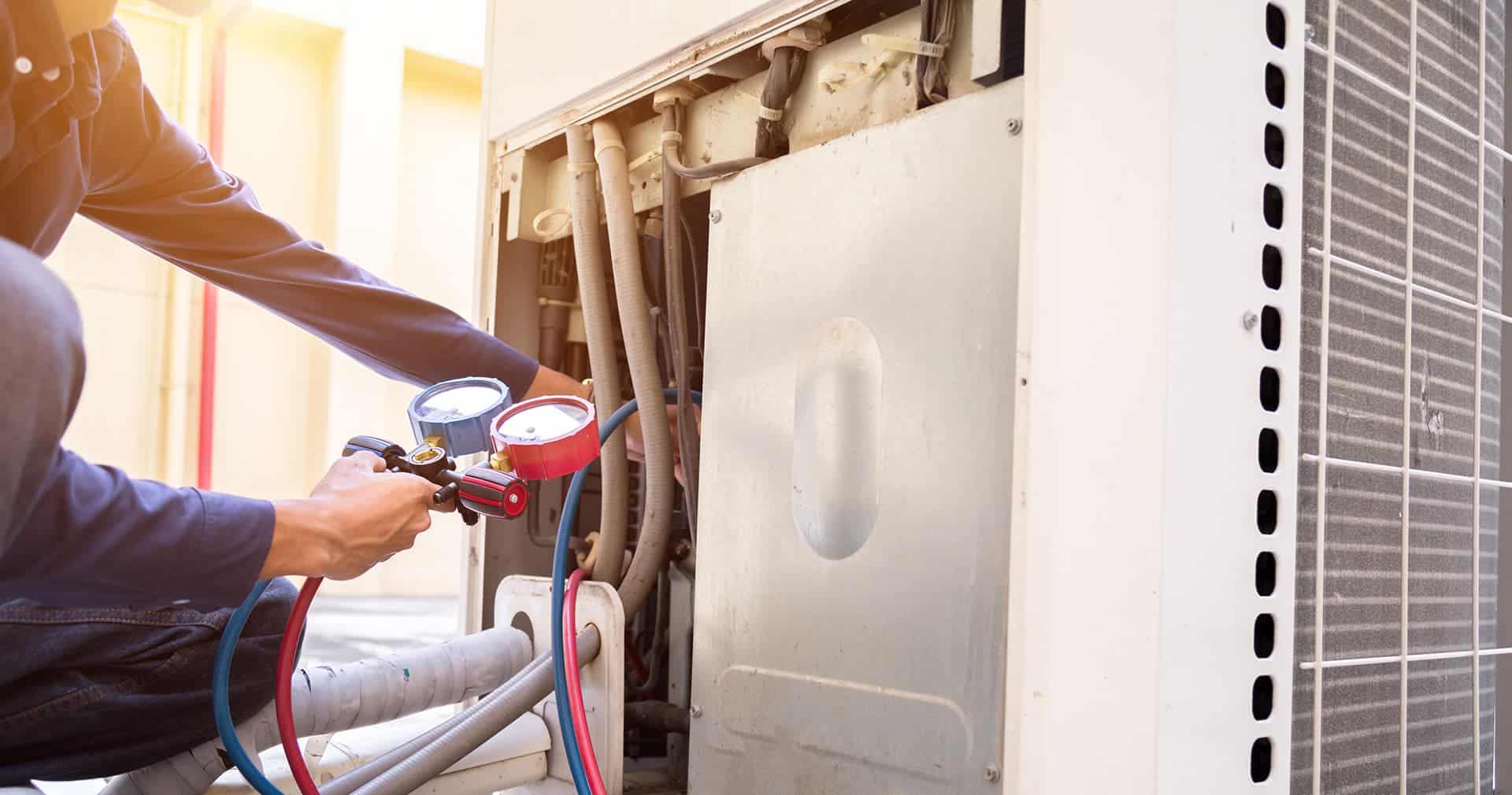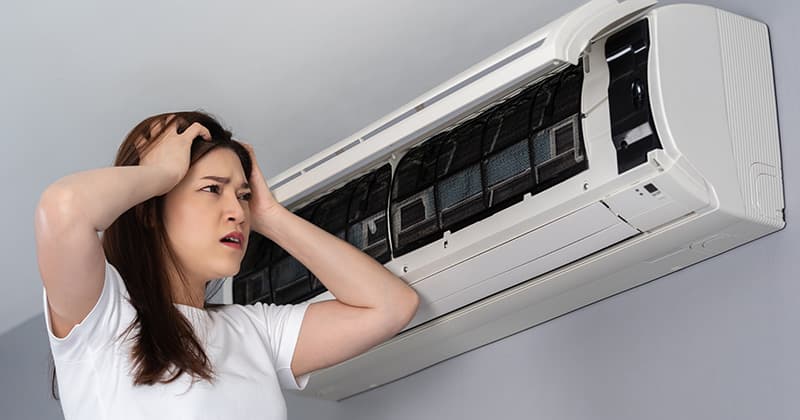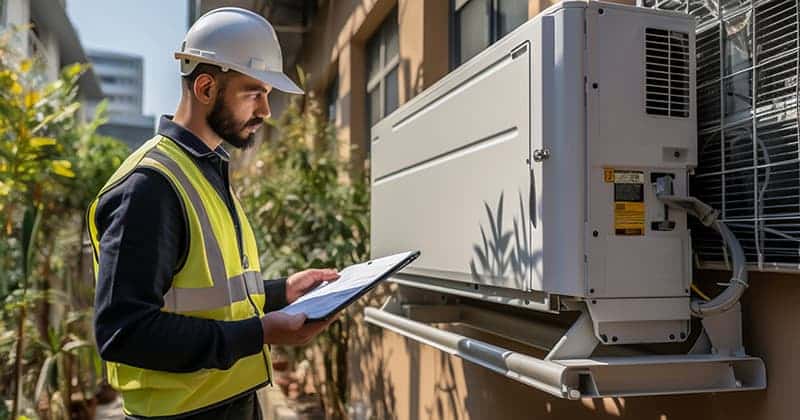
An efficient, high-performing HVAC system requires consistent airflow. Cubic feet per minute (CFM) plays a crucial role in this equation. CFM is a measurement of airflow. But what is CFM in HVAC?
This guide for home service providers provides all the facts on CFM in HVAC. Learn about the common problems it presents, measuring and adjusting it, regulations, and more.
What Is CFM in the HVAC Industry?
CFM is a measurement of the volume of air moving through a space in a minute. In the HVAC industry, CFM defines the rate at which air circulates through a home or building to maintain a comfortable temperature and air quality.
CFM gauges how well an HVAC system delivers conditioned air to different areas of a house. When thinking about CFM in this context, you can realize the importance of airflow.
Why Is CFM in HVAC Important?
For an HVAC system to run effectively and as it should, proper airflow is essential. This rate of airflow must be sufficient. If not, the HVAC cannot distribute warm or cold air efficiently. The result would be that some areas within a structure are too warm or cold.
A healthy CFM also contributes to indoor air quality (IAQ). Since people spend more time indoors than outdoors, poor IAQ can impact health. The American Lung Association reported that indoor air can be two to five times (or greater) more polluted than outdoor air. Appropriate airflow from the HVAC supports proper ventilation, which in turn improves IAQ.
With the proper CFM for an HVAC unit, you can:
- Ensure proper ventilation and adequate airflow.
- Prevent the accumulation of pollutants and allergens that impact IAQ.
- Increase efficiency within a unit so it consumes less energy and doesn’t inflate energy bills.
- Improve comfort within the space through balanced airflow, which leads to an even temperature distribution and eliminates cold and hot spots.

Common CFM-Related Problems in HVAC
The consistency of CFM affects performance, efficiency, and air quality. To ensure this is the case in the unit your company provides and installs, you must accurately calculate CFM.
When there’s a mismatch between CFM and HVAC capacity, imbalances are likely present. The equipment is working harder and less efficiently. Temperatures can fluctuate, and there is energy waste.
Mistakes here can lead to CFM-related problems in the system. Here are some examples of the consequences of inaccurate CFM measurements:
Rough estimates or failure to calculate size results in units that don’t fit the needs of the space.
CFM is something you don’t want to ballpark. Doing so would be a best-guess estimate of what kind of HVAC system is suitable for the requirements of the house or building.
Skipping this part of an assessment could result in a unit installed that produces too little or too much airflow. In either case, performance will suffer, energy costs will rise, and occupants will be uncomfortable.
Improper ductwork design is a common challenge.
An error in CFM could affect the layout of ductwork. If it’s not optimal or too small, there will be uneven distribution and restrictions to smooth airflow.
Also, your customers may ask if larger ducts are better for CFM. Larger doesn’t always mean better airflow. Larger ducts do allow for higher airflow, but you must balance it with the system’s capacity. Oversized ducts can have adverse effects. Primarily, they can reduce air velocity. If this happens, airflow distribution will be poor, and efficiency challenges will arise.
Ultimately, the duct size and system requirements for optimal performance of an HVAC should be in alignment.
Leaking or obstructions may inaccurately influence measurements.
When calculating CFM in HVAC systems, you must consider any likely obstructions to airflow, like furniture blocking a vent. Not accounting for this could skew measurements.
The quality of the filter impacts airflow.
Filters also influence CFM in HVAC units. If a filter is severely clogged or low-quality, it will restrict airflow, which means calculations are inaccurate. Check filters before calculating CFM.
The design of the home or building also affects CFM.
The layout of the house can also distort the CFM measurements. The number and placement of windows should be considered, as this impacts airflow paths.
Vaulted ceilings are another design feature to think about, as this changes air circulation patterns. Always ensure your calculations take these factors into account.
Another thing to use is HVAC industry statistics when comparing CFM measurements and all the factors impacting it.
Dirty coils pose problems with airflow.
Another culprit of poor airflow is dirty coils. The evaporator coils are critical in cooling. If they are not clean, they cannot release heat. As a result, this interferes with an HVAC unit’s airflow.
The system has to work harder to reach the temperature. If this persists, the compressor could fail.
Dirty coils may be the problem in evaluating why CFM numbers are outside the range. Cleaning them will provide a more precise measurement.

How to Measure and Adjust CFM
Understanding CFM in HVAC requires expertise in measuring and adjusting it. Calculating CFM is part of your responsibility to customers. When they schedule HVAC services with you, calculating CFM will be important in diagnosing the problem with their unit.
Depending on what you find out about CFM, the solution could be minor or lead to the conclusion of needing a new unit.
Follow these steps to do so with ease and reliability:
- Determine the airspeed in feet per minute by using an anemometer.
- Hold the anemometer next to the duct to measure by aligning the vane wheel in the direction of the airflow.
- Measure a cross-sectional area of duct in square feet.
- Multiply the airspeed by the square feet to get the CFM.
Here’s an example:
Airspeed is 600 feet per minute, and the area of the duct is 4 square feet.
600 x 4 = 2,400 cubic feet of airflow through the duct every minute.
- Consider any variables that could impact airspeed, such as window efficiency, climate, room size, vaulted ceilings, and homeowner preferences in temperature.
- Compare the CFM reading with the minimum guidelines of one CFM per square foot.
- Determine if ideal CFM adjustments are necessary for specific needs, such as spaces where appliances generate heat and humidity, the number of occupants, and the intended use of the space.
- Discern if the current HVAC system needs improved performance and what may be disrupting airflow.
- Relay the findings and recommendations to the customer.
Ensure your field technicians document all this information within your mobile field service app, centralizing all customer information.
CFM Regulations and Standards in the HVAC Industry
There are many standards for HVAC systems that involve CFM. Many of these regulations apply to specific building types. For example, the U.S. Environmental Protection Agency (EPA) requires at least 15 CFM when outside air through a mechanical system is present in classrooms.
CFM is also directly related to energy efficiency. ENERGY STAR, an EPA and U.S. Department of Energy (DOE) program, promotes energy efficiency and grades products based on this. If they meet the threshold, they are ENERGY STAR certified.
ENERGY STAR HVAC quality specifications related to CFM include:
- Installers must ensure a unit is within the CFM range as determined by the manufacturer.
- Contractors must seal all ducts effectively to ensure minimal air leakage, which would impact CFM. For new construction, the recommendation is no more than 10% duct leakage for ducts in the thermal envelope. Those outside it must have 6% or less. For existing structures, leakage must be 20% or less.
- Installation companies should ensure that room airflows meet the unit’s applications and design requirements. This is different for houses and commercial buildings.
The DOE has more rules about M1 testing compliance. One relevant to CFM is the coil-only reading, which must be 441 W/1,000 CFM.
CFM also has implications for the Seasonal Energy Efficiency Ratio (SEER). SEER represents how much energy and expense a unit requires to operate optimally in a year. The less energy consumption, the better the SEER rating.
Efficient HVAC units have a SEER between 15 and 20. If they meet this, they receive the EnergyGuide sticker. SEER2 is the newest version, replacing the old one in January 2023.
All manufacturers must list a SEER2 rating on their HVAC systems. The requirement is to have a SEER of 14 or greater. It may need to be higher if the climate is hot and humid.
To meet these SEER benchmarks, any unit you install or service must have adequate airflow. If there are CFM-related issues with the HVAC, these energy efficiency guidelines will be challenging to reach. It compromises comfort, too.
Where to Start with CFM Measurements
Now that you know what CFM in HVAC is, what impacts it, how to measure it, and more, you can start measuring it.
Take these actions:
- Use a calibrated and reliable anemometer to measure airspeed.
- Determine the area of the duct for the CFM equation.
- Multiply the numbers for the baseline CFM.
- Consider any factors that may cause inaccuracy, as detailed above.
- Review the manufacturer’s recommendation for CFM.
- Compare readings, manufacturer specifications, and regulations to determine compliance.
- Take measurements at different times of day to understand if it changes the readings.
Related Posts
Top 40 Must-Have Plumbing Tools
Continue ReadingService Fusion Edge: The Smarter Way to Save, Learn, and Grow. All for Free.
Continue ReadingStay Informed
Get the latest news and insights plus, Service Fusion offers and updates.Thank you for your submission.

SHARE